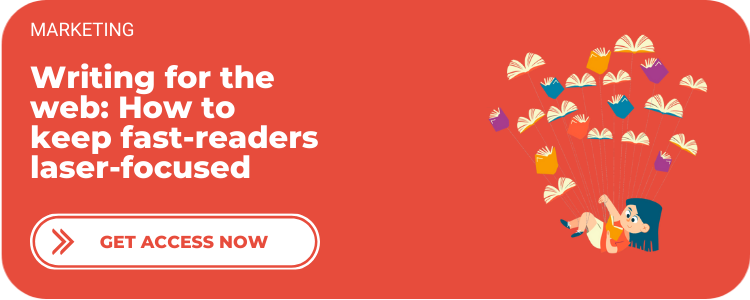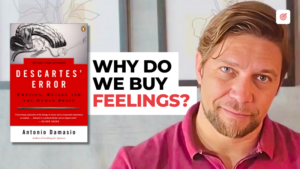In the last video we learned 4 copywriting techniques to write emails that are opened and clicked.
However, to create a successful Email Marketing Campaign, we need need to go one step further and learn copywriting techniques that will lead prospects to a safe, compelling, and transformational purchase.
Today, we’re going to cover 4 new copywriting techniques do Power-Up email conversions.
But before we get into it…
Let’s dive in.
Copywriting Technique #12: Objection Breakers
Amy knows that Email Marketing List Building is a big challenge for her audience and for anyone working with Email Marketing.
That can be an obstacle for people to engage with her sales pitch.
By saying “without a big list”, she is breaking objections, being inclusive, and delivering value in one powerful swing.
Include copy that breaks objections to all your services descriptions to focus your readers’ attention to what matters to them – their outcome.
Here is how you can create Objection Breakers:
- Make a list of your Buyer Personas pain-points.
- Create specific copy that counters each of one them.
- Distribute them across your content.
When I say “distribute them”, what I’m trying to say is to don’t keep them to use only when pitching a sale.
It will feel natural to your audience if they have already internalized the objection breaker idea when they get to the point of making a purchase decision.
Amy Porterfield’s email example is not a sales email. It’s a nurture email.
That means she’s already working with the objections way before pitching any sale.
Copywriting Example 6 – Stu MacLaren: Last Call For Tribe (And Recurring Revenue)
What we can learn from this copywriting example?
Copywriting Technique #13: Scarcity
Scarcity is one of the most powerful Mental Triggers for persuasion.
By using scarcity copy like “last call”, Stu McLaren is reminding his audience that they need to take action now or they will lose an opportunity.
Scarcity is powerful because people are more inclined to take action to prevent loss than to provide gain.
But remember: don't fool your audience. If the cart will close. It will close. Don't use it to force people to take action if it's not true. It's going to backfire.
You don’t want that.
Scarcity copy can include:
- Time constraints. That’s when there’s a time limit.
- Items constraints. That’s when there’s a quantity limit.
- Price constraints. That’s when there’s a promotional price limit. After that limit is reached, the prices will go up.
The price constraints can be based on time or item constraints.
Copywriting Technique #14: Customer Focus
“Recurring revenue” is Tribe (Stu McLaren's Product) main prize.
Compelling copywriting examples focus on what people are looking for: their outcome and transformation. Not features.
This contrasts with common mistakes I often see, like:
- “We are so thrilled to let you know that we have this product.”
- “This product comes with amazing features no other has.”
- “What’s new… [features description].”
Your customer might even be happy about you excitement, but they won’t take action until they see what’s in there for them.
To make good use of the Customer Focus Copywriting Technique, do this:
- Search books related to your solution on Amazon.
- Filter bad reviews about that book.
- Extract keywords from those reviews and use them to create your copy focused on what people actually expect to find, not what you think they do.
Copywriting Technique #15: The Third Person
Storytelling has 3 points-of view:
- First Person.
- Second Person.
- Third Person.
The First Person is the voice of the guide. It is identified by the pronouns “I” and “we”. It presents personal takes and opinions about a topic.
The Second Person is a direct message to the hero of the story. It is identified by the pronoun “you”. It outlines the plan the hero should take to save the day.
The third person is an outsider’s voice. It is identified by the pronouns “he”, “she”, “they”.
What’s intriguing about the third person is that it adds context to the unknown world the hero needs to face.
Adding that Third Person to your copy will enrich it with data and examples your readers might face. It can also add validation to the points you’re making.
3 simple ways to add the Third Person copywriting technique to your copy:
- Use parenthesis to add an additional comment.
- Use real-life examples to add context.
- Use data to add value.
Stu McLaren subject line is:
“Las Call for Tribe.”
That’s the main information. The reason why that email exists. To remind people of that last call.
But then, he adds one more information to that in parenthesis:
“and recurring revenue.”
It’s as if there was another person in the conversation besides the reader and Stu. Someone else that added that last piece as a context to what has been said.
Adding the Third Person to your copy can expand the conversation with little insertions that doesn't harm the flow.




